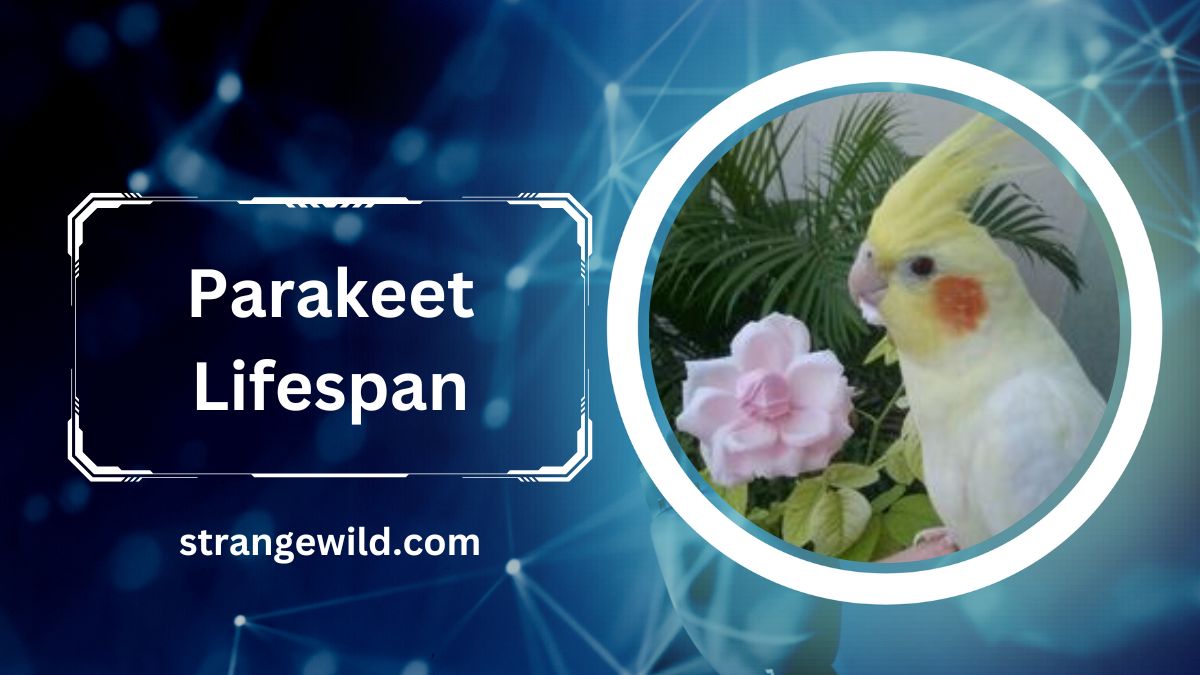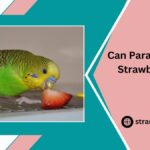Parakeet Lifespan – How Long Do Parakeets Live?
Parakeet Lifespan? No matter how difficult it may be to accept, our dogs won’t live to see our age. Whether you keep a dog, cat, or bird as a pet, you may already be curious about their expected lifespan. If you have a parakeet or budgie, you’re probably also interested in learning how long they live. Small to medium-sized parakeets were first domesticated in Australia. In captivity, these parrot species have a lifespan of between 6 to 14 years. Vegetables can cockatiels eat
Parakeets can potentially live for 20 years with the right care and nutrition. In the wild, they are anticipated to survive for 25 to 30 years. This article will provide all the information you need about parakeet longevity as well as advice on how to maintain these house birds healthy all the way to old age. Let’s go right to the information you require! Can cockatiels eat fruit
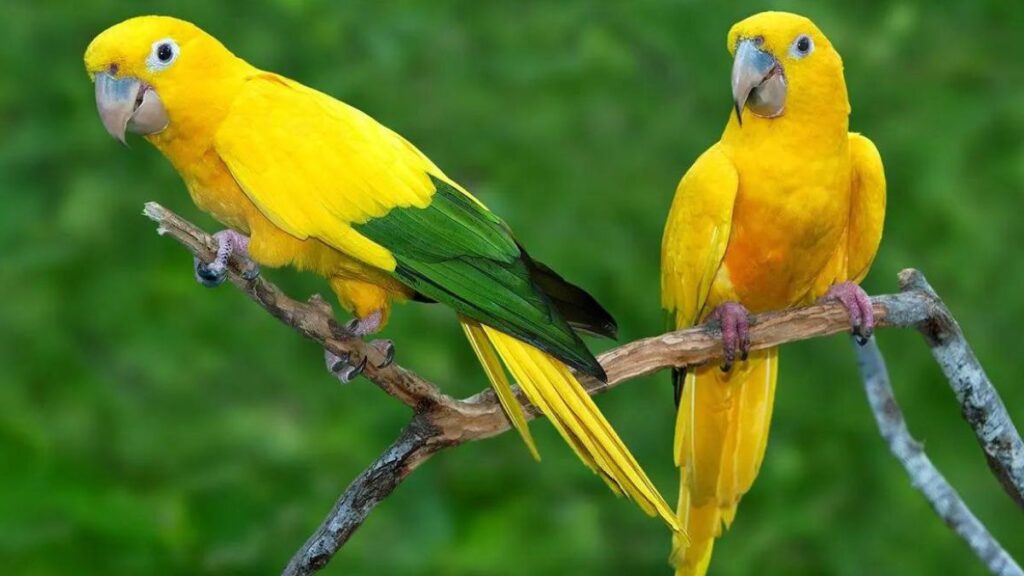
How Long Do Parakeets Live in Captivity? (Life Expectancy of Each Species of Parakeet)
Compared to living in the wild, parakeets live less time in captivity. Ironically, this is frequently the case for these birds. When captured or taken in by private owners, they often survive for 6 to 14 years. Birds in better health can live for 20 years or longer. The longevity of a parakeet will always be influenced by a number of variables, including food consumption, diet quality, and exercise level. Additionally, it differs according to the species, which are as follows:
Budgerigar (5 – 8 years)
Small, long-tailed parakeets known as budgerigars or budgies eat large seeds. They can also be a lovely light blue-green color like the birds in the picture, however, they are more frequently spotted in vibrant yellow and green hues. In captivity, they normally have a lifespan of 5 to 8 years. Can cockatiels eat cucumbers
Monk Parakeet (15 – 20 years)
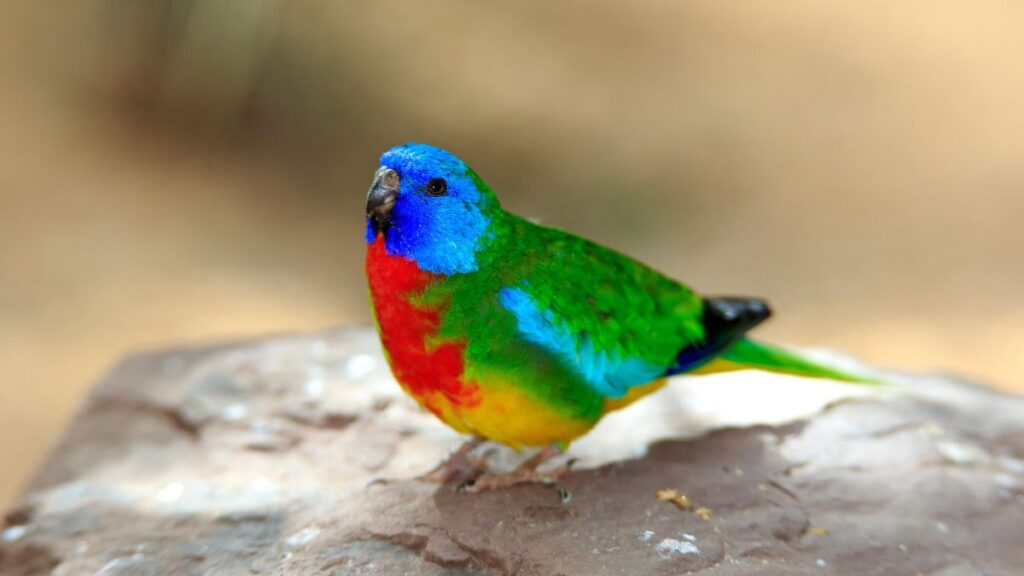
Quaker Parrots, commonly referred to as monk parakeets, are vivid green birds with distinctive gray chests and a yellowish-green abdomen. They are the only species of parrot that is known to use sticks to construct their nest. These magnificent birds live for roughly 15 to 20 years in captivity.
Plain Parakeet (18 – 20 years)
Small birds known as plain parakeets have long, pointed tails and evenly green feathers. They are typically yellowish-green and can be found in southern Brazil’s tropical woods. These birds have a certain charm despite their name. They can live anywhere between 18 and 20 years old if given the right care and attention.
Grass Parakeet (10 years)
Another kind of parrot that comes in a variety of colors is the grass parakeet, sometimes known as the grassskeet. The Bourke’s Parakeet is another name for this subspecies. They live for approximately 10 years.
Barred Parakeet (10 years)
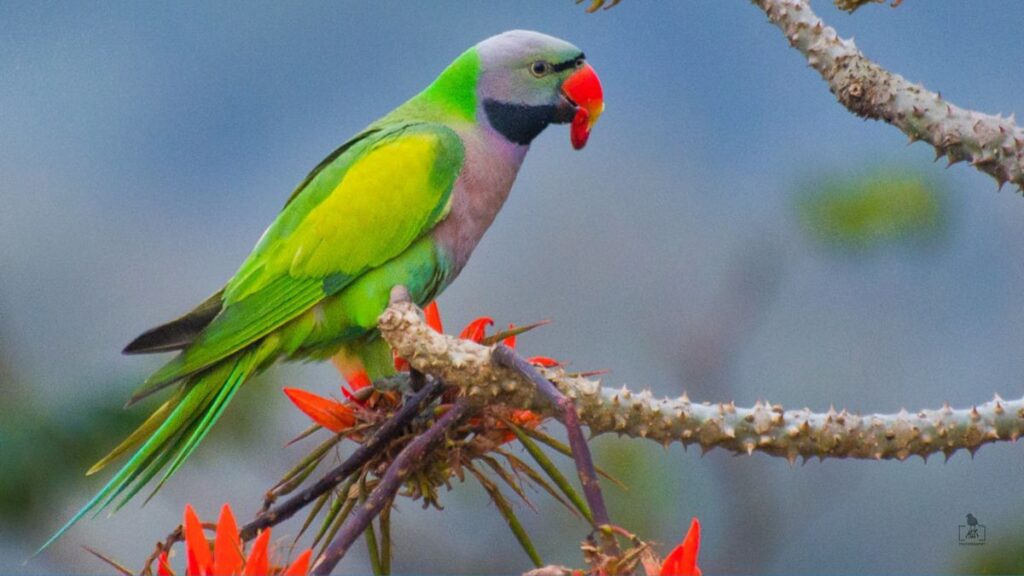
Barred parakeets, also known as lineolate parakeets, are the cute birds in the picture above. They are considered as the kindest and quietest members of the parrot family and go by the nickname “Linnies.” They like swimming and playing in the water just as much as flying. Their life expectancy is roughly ten years, just like Grasskeets.
Mustache Parakeet (20 – 25 years)
You might already be aware of the origin of the name “Mustache Parakeet” for these birds. They actually have a strip of black feathers over their beaks instead of a “mustache.” They are also referred to as red-breasted parakeets because of the patch of red feathers on their chest. On average, they live 20 to 25 years.
Rose-Ringed Parakeet (25 – 30 years)
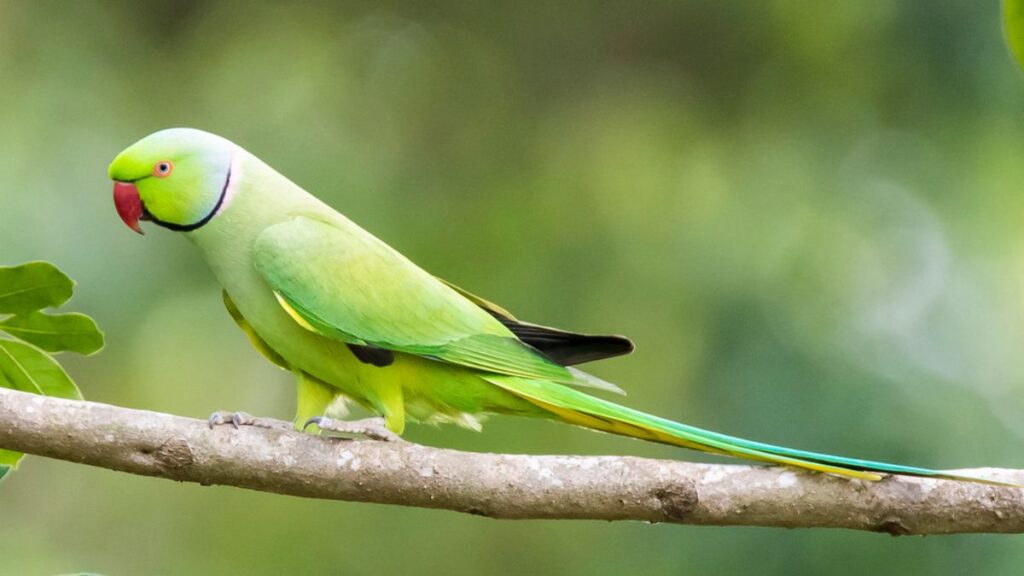
The medium-sized Rose-ringed Parakeet, also known as the Ring-necked Parakeet, is distinguished by its bright green feathers and a black feather ring around its neck. They typically have a long lifespan of 25 to 30 years.
Green-Cheeked Parakeet (10 years)
One of the most colorful varieties of the species is the mischievous and playful green-cheeked parakeet. They have long maroon tails, blue and green wings, and a primarily green body. The hue of their crown can be gray, black, or brown. These fascinating birds have a ten-year lifespan.
Golden Parakeet (20 – 25 years): Parakeet Lifespan
The Amazon rainforest is where you may usually find golden parakeets. Anyone would be drawn in by their striking yellow look and green feathered wings. According to the International Union for Conservation of Nature, they are a vulnerable species (IUCN). They can survive for 20 to 25 years in captivity.
Lifespan of a Wild Parakeet: How Long Do Parakeets Live in the Wild?
Parakeets in the wild are known to live longer than those kept in cages. They live for about 25 to 30 years on average. They lead healthier lives in the wild because they are constantly flying around looking for food and water. Some would contend that because of predators, wild budgerigars have a higher chance of dying young. The fact that these birds move in flocks of between 20,000 and 30,000 birds can be used to refute this assertion. They are less likely to be attacked by larger birds when there are thus many of them.
Do Parakeets Live Longer Than Other Birds? What is the Life Expectancy of Parakeets Compared to Other Birds?
Birds typically live longer than the majority of cat and dog breeds. I’ve talked about the lifespan of parakeets, both in captivity and in the wild. I’m going to compare several bird species’ life spans to parakeets right now.
The common pet bird species and how long they can survive in the wild and captivity are included in the table below:
This data shows that Finches have the lowest lifespans, both in captivity and in the wild, and that Parrots have the longest. It’s also important to remember that most birds live longer in captivity than they do in their native environment.
For parakeets and English budgies, this is typically not the case, but uncontrollable causes can still severely shorten their years in the wild.
What Is the Oldest Living Parakeet?: Parakeet Lifespan
You definitely want to know how old the oldest living parakeet is because they have long lives. Charlie, a budgie who is 29 years and two months old, has the title of oldest budgie in the Guinness Book of World Records.
Former British Prime Minister Winston Churchill previously owned Charlie, often known as Charlie the Curser. Charlie is currently being looked after by Sylvia Martin, the manager, at Heathfield Nurseries. The business is situated in Reigate, United Kingdom, on Flanchford Road.
Factors that Determine a Parakeet’s Lifespan
Everyone wants a long lifespan for their pets. If you own a budgie bird, you might be interested in learning about the elements that influence its lifespan. You can assess and order the necessary tasks in order to give your pet the best possible quality of life in this manner.
How long a parakeet can survive in the wild and in captivity depends on the following factors:
External variables: Parakeet Lifespan
When they are weak and not moving with the group, parakeets in the wild are more likely to be devoured by larger birds. Even if they live, they most certainly have wounds. Parakeets may not acquire the nutrition they need to survive if there is competition with other birds for food.
Parakeets kept in captivity are subjected to pollutants, hazardous substances, cigarette smoke, and plants that might injure their delicate respiratory system. In particular, while they are in their cages, loud and sudden noises also cause them to become scared and harm themselves.
Genetics: Parakeet Lifespan
Some parakeets struggle and have shorter lives as a result of inheriting their parents’ health problems. Both kidney cancer and malignancies in the reproductive system are possible in them. If a parakeet is born with a weakened immune system, it may be more vulnerable to infectious infections. If they are smaller and more delicate than others, they can become easy prey for predators.
Fitness and Diet: Parakeet Lifespan
In the untamed woodlands, parakeets eat a variety of seeds, fruits, nectar, and insects. Owners of animals maintained as pets should give them a similar diet to help them develop well and lower their chance of sickness. Missing meals or overeating can have major health consequences.
Parakeets require frequent exercise to keep a healthy body, just like any other animal. They are free to fly anytime they wish in their natural environment. Even as pets, they still require at least one daily flight out of their cages.
Shelter: Parakeet Lifespan
In captivity, a parakeet lives in a cage rather than in large trees. Your bird’s physical and mental health might suffer significantly in a small, unclean cage. A small cage with restricted movement might lead to accidents and destructive behavior. Your budgie may be more susceptible to illnesses due to the accumulation of feces and other dangerous pollutants in their cage.
Veterinary Services
Untreated injuries and unidentified health issues can lead to disastrous situations and needless suffering for your beloved parakeet bird. To keep an eye on their general health and treat any broken bones in their body, frequent trips to the vet are advised. Your budgie’s lifespan will be considerably reduced if you don’t provide it with the necessary veterinarian treatment. Due to the significant contrast in their environment from wild birds, they need additional medical treatment.
Inbreeding: Parakeet Lifespan
Less frequently discussed is the effect of inbreeding on the lifespan of captive parakeets. It is possible for children of two closely related birds to be born with congenital abnormalities that can reduce their longevity. The majority of inter-relative breeding occurs in the wild, which reduces genetic diversity in the parakeet population. Through the use of captive breeding methods, close family pairing can be completely avoided.
What Causes Parakeet Death Most Often?
Your budgie cannot escape the circle of life, much like any other creature. Although we have no control over nature, we can become aware of the circumstances that might lead to the demise of our cherished pets. Predators are the main reason for parakeet deaths in the wild. Parakeets are little birds, thus larger birds like falcons and eagles frequently hunt them. Snakes and monkeys that climb trees and eat their eggs and younglings are another threat to them.
Parakeets kept in captivity are susceptible to poisoning from a variety of sources, but largely from food and domestic odors. These birds are poisoned by caffeine, chocolate, fruit pits, avocado, onions, garlic, and apple seeds. The same household goods you use every day for cleaning and other purposes might also cause parakeets to become ill or even die. Incense, scented candles, air fresheners, aerosol cleaners, and lead paint are just a few examples of these things.
Accidents may also result in the unexpected demise of parakeets. They might be startled awake in the middle of the night by a loud noise, which would be quite upsetting for them. They frequently fly madly around their cage when these nighttime frights happen, especially when there is no lighting to aid in their vision. It is best to offer lights at night when parakeets are sleeping because night frights can seriously harm parakeets, result in major injuries, and even be fatal.
Parakeets’ Common Health Issues

Parakeets are susceptible to a number of diseases and ailments in addition to consequences from poisonous food and gases. Below is a list of a few of the more typical ones:
The Parrot Flu: Parakeet Lifespan
This infection is brought on by the bacterium Chlamydia psittaci. Both overcrowded cages and tropical jungles serve as psittacosis breeding sites. Other birds may contract it through airborne feces and urine. Additionally, oral contact with humans can spread this virus. Parrot fever symptoms include diarrhea, sudden weight loss, fatigue, and discharge from the eyes and nostrils.
The disease of Proventricular Dilatation (PDD)
The proventriculus, or actual stomach, of parakeets, is where this illness primarily manifests itself. PDD causes inflammation by allowing white blood cells to penetrate the neurons. Food that has become lodged in the bird’s stomach may be the cause of this. Watch out for warning signs and symptoms including nausea, anorexia, and weight loss, and noticed that their stools contained seeds that hadn’t been digested.
Aspergillosis: Parakeet Lifespan
Aspergillus is a common fungus that causes infections of the respiratory system. There are two types of aspergillosis: acute and chronic. No signs can be seen if your parakeet bird has the chronic kind.
However, if they have the acute type, they may exhibit breathing difficulties, agitation, unusual thirst, and frequent urination. This virus can spread to them in unclean cages and dirty food bowls.
Sarcocystosis pulmonary
Your parakeet may get sarcocystosis, a protozoal infection if it consumes contaminated food or water. As a result, the bird develops cysts in its lungs, muscles, and even neurological system. For budgies, this infection can be extremely deadly and result in instant death.
In addition to the previously stated medical issues, parakeets can also contract additional ailments that are less harmful. But with these health concerns in mind, parakeet owners find it simpler to adopt a better lifestyle for their pets.
Five Tested Methods to Ensure Your Parakeet Lives Longer
Knowing about the many diseases or other causes of death in their previous pets can be quite frightening, especially for first-time parakeet owners. Fortunately, if you take care of your parakeet according to the best practices, you won’t have to endure any kind of discomfort.
Here are five tried-and-true methods to guarantee a long and healthy life for your pet parakeet:
1. Feed your parakeet a balanced diet
Like other pet birds, parakeets require a certain diet to survive in captivity. They can consume a variety of fruits and vegetables, and they will undoubtedly obtain the nutrients they require. Produce such as mango, grapes, bananas, pineapple, broccoli, lettuce, and spinach is safe for parakeets. As a source of protein, you can also give them boiled eggs once a week.
Depending on how energetic they are, they should also include grains, seeds, and nuts in their diet. They must be given a daily serving of a perfect mixture of these wholesome meals, as well as fresh water to keep them hydrated. To avoid illnesses, their water bottle and feeding bowl should be cleaned frequently.
2. Permit them unrestricted movement and play.
It’s not a good idea to keep your parrot in its cage all day. They have to be able to move and fly freely in the open. They should be let to leave their cage at least once every day so they can play with toys and exercise. You can give them toys like ropes and swings or put ladders and jungle gyms in their cages to keep their hearts healthy. Toys with loud sounds and vibrant colors are also a great option for grabbing their interest and stimulating their natural foraging tendencies.
3. Keep them in a spacious, spotless cage.
The size of the cage is the first factor to think about when purchasing one for your parakeet bird. For these birds to stretch, move, and fly around a little, a large cage is the best option. The top and bottom should have different widths. The bottom portion of the cage should retract for simple removal of feces and urine particles.
A water dispenser and feeding bowl should be placed so that you can easily slip your hand inside to replace or empty them. As long as they both have enough room to roam around, it is acceptable to have two parakeets in the same cage.
4. Verify that there is adequate illumination
Place the cage for your pet budgies in a well-lit area of the house to keep them singing and active. However, bear in mind that placing them in direct sunlight poses a risk due to extreme UV exposure. For them to receive the benefits of UVA and UVB light, they only need to be exposed to natural light for 15 to 40 minutes three times per week.
As a result, you may have stronger bones, a stronger immune system, and get better sleep. On the other hand, insufficient sunlight exposure might cause behavioral issues that show up as feather plucking. In addition, they may have problems with their bones and reproductive functions.
5. Become knowledgeable on proper parakeet care.
It can be difficult to be an expert in parakeet care if you have never handled little pet birds. As a general guideline, though, you should never grab someone against their will. Your budgie may occasionally experience stress as a result of their fearful reaction, which frequently results in unwelcome situations. Stay near to them until they are accustomed to you, and gradually establish trust by doing so.
Try to feed them with food pellets and quietly talk to them. Repeat this process until they feel secure and at ease enough to sit on your finger. A good physique and a sound mind are indicators of your parakeet’s healthy lifestyle. Your pet’s lifespan may also be influenced by your bond with them.
FAQs: Parakeet Lifespan

Parakeets can survive for how long without food?
Pet parakeets can go only a day without eating. They require constant calorie burning to produce energy because of their strong metabolism. Feeding them after more than a day could have serious repercussions. Giving them a large bowl of fruits and veggies to nibble on throughout the day is preferable.
Since they don’t follow set feeding routines, having an automatic food dispenser will save you from constantly checking and restocking their bowl.
Can Parakeets Survive Without Water?
Parakeets can last 48 hours without drinking water in terms of water consumption. Due to their small size and lightweight, these birds don’t require large amounts of water to maintain their bodies. In addition, they lack sweat glands, which means that, in contrast to humans, they are designed to survive for extended periods of time without water. It is nevertheless advisable to keep the water in your dispenser clean and fresh so that customers won’t be hesitant to sip it when they get thirsty.
How to Determine a Parakeet’s Human Years of Age?
Simply divide the average human lifespan by the average lifespan of a parakeet bird to determine your parrot’s age in human years. The average lifespan of a person is 72.6 years as of 2019 according to the United Nations. The average lifespan of a parakeet is 10 years, as determined by a straightforward calculation. The simple division has revealed that one parakeet year is equivalent to 7.26 years for humans.
How Can I Determine My Parakeet’s Age?
Contacting the breeder or pet shop where you purchased your parakeet will quickly reveal the age of your bird. You can look at their cap or forehead if none of these alternatives are available. They are approximately three to four months old if their backs have long feathered stripes or bands. A white or yellow hat should have grown on your parakeet if it is older than four months.
In addition to using this technique, you might also try figuring out their eye color. It is most likely that those with black pupils are younger than four months old, whereas those with irises that are paler than their pupils are roughly eight months old.
Conclusion: Parakeet Lifespan
Knowing the lifespan of a parakeet is important, just like with any other pet. There are various strategies to make sure they stay in good physical shape, even if several causes can shorten their lives. And good mental health until they reach old age. Since they are loving and sociable pets, parakeets should have a long lifespan.
You can guarantee that their lives will be full of wonderful moments spent with you and your family by providing them with the right care, attention, and ongoing scientific education. Your parakeet may even surprise you by living a longer life in captivity than predicted thanks to your good habits.

